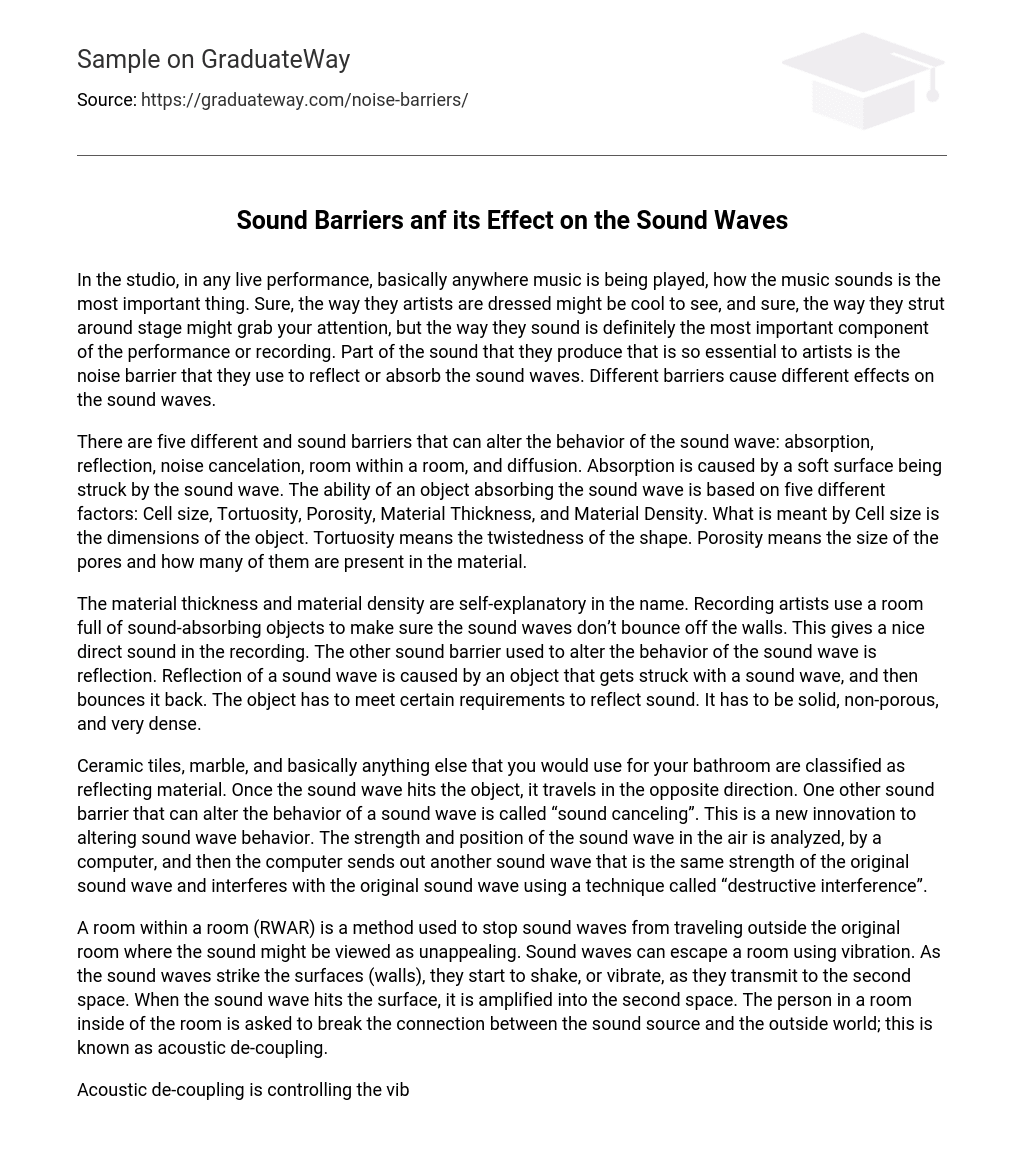In the studio, in any live performance, basically anywhere music is being played, how the music sounds is the most important thing. Sure, the way they artists are dressed might be cool to see, and sure, the way they strut around stage might grab your attention, but the way they sound is definitely the most important component of the performance or recording. Part of the sound that they produce that is so essential to artists is the noise barrier that they use to reflect or absorb the sound waves. Different barriers cause different effects on the sound waves.
There are five different and sound barriers that can alter the behavior of the sound wave: absorption, reflection, noise cancelation, room within a room, and diffusion. Absorption is caused by a soft surface being struck by the sound wave. The ability of an object absorbing the sound wave is based on five different factors: Cell size, Tortuosity, Porosity, Material Thickness, and Material Density. What is meant by Cell size is the dimensions of the object. Tortuosity means the twistedness of the shape. Porosity means the size of the pores and how many of them are present in the material.
The material thickness and material density are self-explanatory in the name. Recording artists use a room full of sound-absorbing objects to make sure the sound waves don’t bounce off the walls. This gives a nice direct sound in the recording. The other sound barrier used to alter the behavior of the sound wave is reflection. Reflection of a sound wave is caused by an object that gets struck with a sound wave, and then bounces it back. The object has to meet certain requirements to reflect sound. It has to be solid, non-porous, and very dense.
Ceramic tiles, marble, and basically anything else that you would use for your bathroom are classified as reflecting material. Once the sound wave hits the object, it travels in the opposite direction. One other sound barrier that can alter the behavior of a sound wave is called “sound canceling”. This is a new innovation to altering sound wave behavior. The strength and position of the sound wave in the air is analyzed, by a computer, and then the computer sends out another sound wave that is the same strength of the original sound wave and interferes with the original sound wave using a technique called “destructive interference”.
A room within a room (RWAR) is a method used to stop sound waves from traveling outside the original room where the sound might be viewed as unappealing. Sound waves can escape a room using vibration. As the sound waves strike the surfaces (walls), they start to shake, or vibrate, as they transmit to the second space. When the sound wave hits the surface, it is amplified into the second space. The person in a room inside of the room is asked to break the connection between the sound source and the outside world; this is known as acoustic de-coupling.
Acoustic de-coupling is controlling the vibration in the walls and in the air. This can be done by changing the material of the walls, and setting times for the ventilation in the room to turn on or off. If a mirror-like reflection of a sound wave off of a reflective surface is giving a complex echo, then an acoustic diffuser will be added to the surface that the sound wave is being reflected off of. The acoustic diffuser is a device that allows the sound wave to travel across the room in all directions.
The way that the sound is stopped or reflected is very important to people today because it puts emphasis on the message or the spirit of the song. The use of a reflective barrier can be used to put emphasis on the distorted image displayed by the lyrics or the instruments. The use of an absorbing barrier can be used to keep the sound of the music simple and soft. Sources * “Studio Tips. ” n. pag. Acoustics. Web. 16 Jan 2012. <http://www. studiotips. com/acoustics. html>. * Moreno, Ivan. “Output irradiance of tapered lightpipes. ” 27. 9 (2010): n. pag. Web. 16 Jan 2012. <http://fisica. uaz. edu. mx/~imoreno/Publicaciones/JOSA2010. pdf>.





